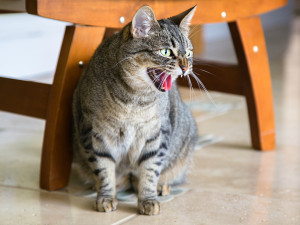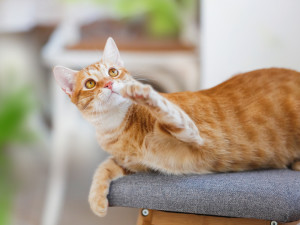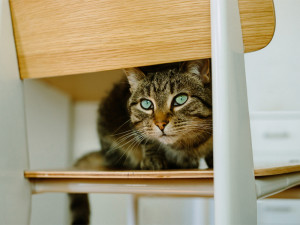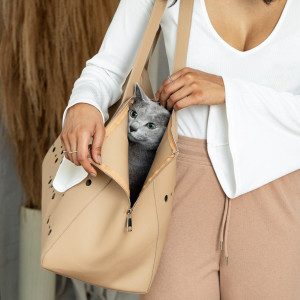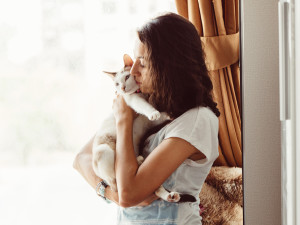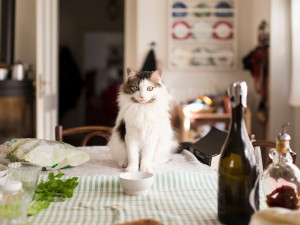What Your Cat’s Sexy ‘Slow Blink’ Actually Means
Cat behaviourist Cristin Tamburo on how to read cat eyes
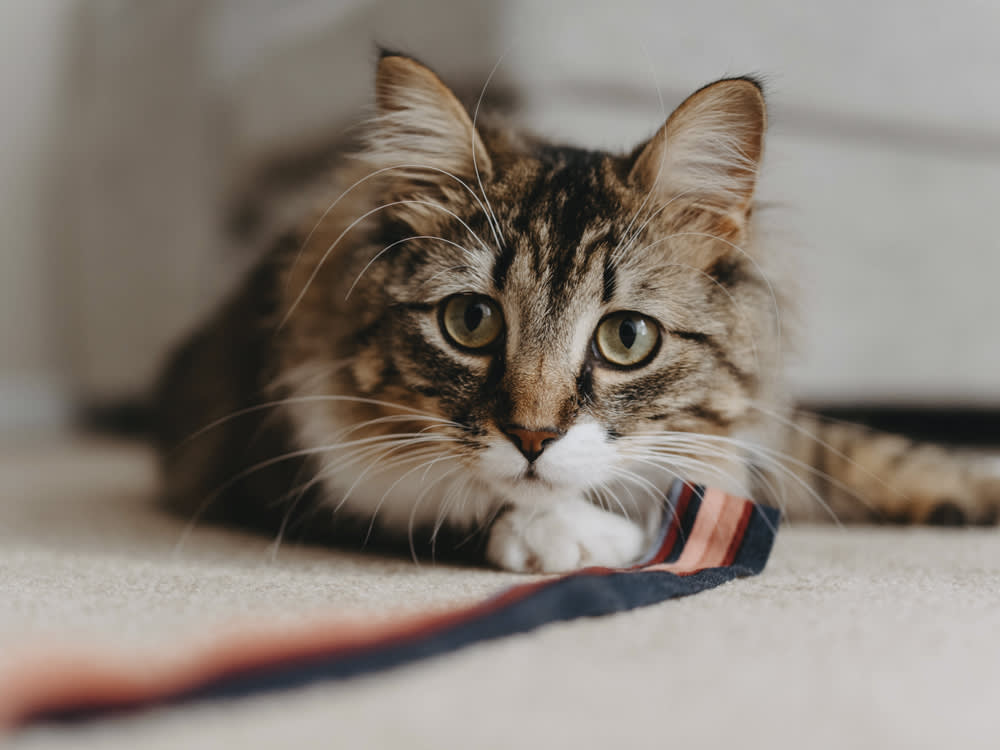
Share Article
Cats communicate in a lot of different ways. They meow to get our attention and purr to let us know we’re scratching them in just the right spot. They swish their tails around when they are annoyed and sometimes, when things are quiet and they’re feeling truly safe and content, they give us what’s called the ‘slow blink’.
When a cat slow blinks at you
The slow blink, for those who don’t know, is just what it sounds like: a leisurely closing and opening of the eyes that, to the uninitiated, probably looks like any other blink. But it’s not like any other blink. “The slow blink is a sign of trust,” says certified feline behaviour consultant Cristin Tamburo. “Your cat is showing that they are relaxed and comfortable in your presence.”
Does that mean they love you? It’s probably better to think of the slow blink as the feline version of a gentle, welcoming smile. It’s also one of the few ways that we, as humans, can communicate with cats in their own language. “When I’m working with fearful cats or cats who do not know me, I always use the slow blink method to try and signify to them that I am not a threat,” says Tamburo. “Quite often, they will slow blink back, almost as if they truly understand. You will notice that many cats, when fearful or aggressive, have big, staring eyes, so the soft, slow blinks essentially let them know you are not there to harm them.”
How to slow blink back
When I slow blink at my own cat, Pumpkin, he takes it as an invitation and promptly trots over for a kiss and a snuggle. Indeed, he usually only slow blinks back at me when he’s in my arms and we are already as close as physically possible. “It’s a great way of enhancing the bond you have with cats,” says Professor Karen McComb, PhD, who studies animal behaviour at the University of Sussex. “It is something you can try yourself with your own cat at home, or with cats you meet in the street. Try narrowing your eyes at them as you would in a relaxed smile, followed by closing your eyes for a couple of seconds. You’ll find they respond in the same way themselves and you can start a sort of conversation.”
According to a recent studyopens in new tab by Professor McComb and Dr Tamsin Humphrey at the University of Sussex, cats are more likely to slow blink at their owners if their owners slow blink at them first. They are also more likely to slow blink at slow-blinking strangers than those who just stare at them neutrally, and were generally much more likely to approach people who slow blinked at them first, whether they knew them or not.
As for how cats developed the slow blink, Dr Humphrey suspects that, like many feline behaviours, it arose out of their interactions with us humans. “It could be argued that cats developed the slow blink behaviours because humans perceived slow blinking as positive,” says Dr Humphrey. “Cats may have learnt that humans reward them for responding to slow blinking. It is also possible that slow blinking in cats began as a way to interrupt an unbroken stare, which is potentially threatening in social interaction.”
When a cat stares with dilated pupils
“There are a lot of ways that cats communicate with their eyes,” says Tamburo. “Squinting eyelids can be a sign of fear or aggression. One of my own cats used to squint his eyes when he was being ‘mean’ to one of the other cats. He looked like a toddler trying to scare off another toddler.”
“Dilated pupils and staring can indicate a cat is aroused – asserting their dominance or about to become aggressive – and pupils that are small slits can be signs of pleasure, excitement, fear, or anger,” adds Tamburo. “Eye language can mean different things, so it’s always important to assess the whole cat – eyes, ears, whiskers, body and tail posture to get a better understanding of what they are truly trying to tell us.”
But, in general, if you’re on the receiving end of a slow blink, it means that you are doing something right – your cat is happy and right where they want to be, and that’s really all you need to know.

Charles Manning
Charles Manning is an actor, writer, and fashion/media consultant living in New York City with his two cats, Pumpkin and Bear.
Related articles
![orange cat lifting its paw]()
Why Do Cats Raise a Paw?
Are they saying “Hi” or trying to high-five? Cat behaviourists decode your pet’s cryptic paw signal
![Cat sitting on a kitchen chair, looking at the camera]()
How to Kitten-Proof Your House
A cat behaviourist’s 10 steps for keeping your cat out of trouble
![A gray cat in a tan cat carrier]()
Your Cat Doesn’t Have to Hate Their Carrier
A behaviourist’s six surefire steps to training a cat to go in a carrier
![Young woman hugging her cat]()
Why Do Cats Purr?
Surprise: it doesn’t always mean they’re happy
![cat staring at person on table]()
Why is My Cat Giving Me the Evil Eye?
...Is it something I said?

